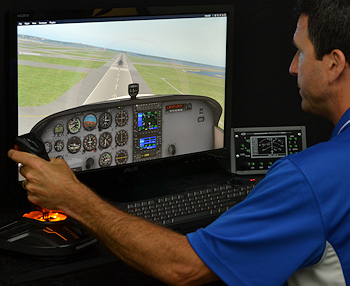Subscriber question:
"I get that the military and airlines need simulators because their aircraft are so expensive and complicated. But what's the point of using a sim for light airplanes when we all want an excuse to go fly anyway? And desktop simulator time can't even be logged." — Al S.
Tom:

“Simulators serve four purposes that are difficult or impossible to attain in an actual airplane.
First, they provide a means to experiment with new equipment or new techniques in a safe and efficient manner. Transitioning to a glass cockpit? Learning how to fly a DME arc? You’ll pick it up a lot faster in a sim before using those new skills in the airplane.
Second, you avoid the time it takes to start-up, taxi out, take off, and fly to and from a practice area or the nearest airport with the type of approach you wish to practice. Simulator time is much more efficient, allowing you to practice the skills you want or need in much less time.
A third advantage is the ability to pre-fly a trip or an arrival or departure procedure. If you’re planning to fly somewhere with a tricky SID or STAR, approach or missed approach, you can practice it ahead of time in the sim so when you fly it for real it won’t be your first time.
Finally, simulators provide the opportunity to practice abnormal and emergency procedures, often without warning. It’s simply not possible to safely or accurately present most emergencies or abnormalities in an airplane.
Even if you can’t log it, you can do a lot with simulators that will keep your skills sharp and make you a better pilot.”
Do you use a sim (Full-motion simulator, FTD, ATD, or even uncertified desktop sim) as a regular part of your proficiency?
(If you do, please share the kinds of things you do on a sim.)
